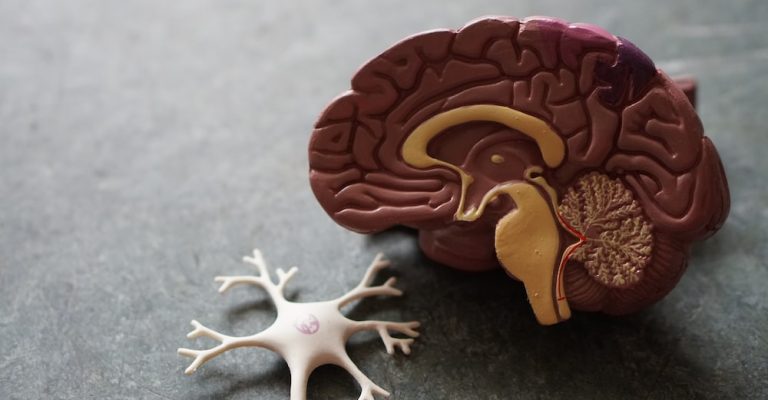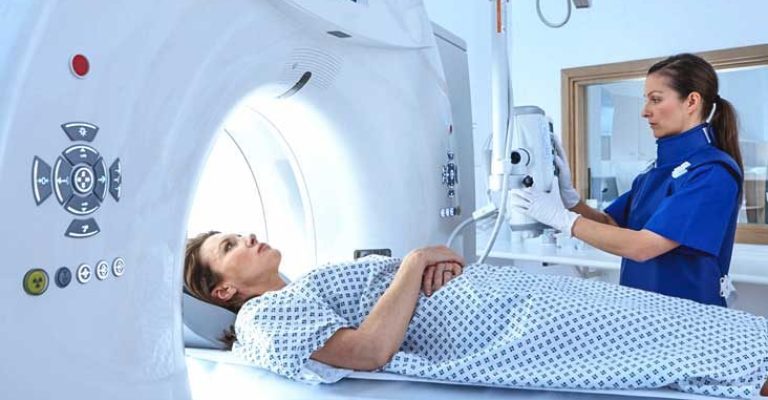
The brain stem is responsible for controlling fundamental aspects of the body, including breathing, swallowing, and balancing.
A brain stem stroke, which may have an effect on these important activities, can be caused by either a blockage or a hemorrhage in the brain stem.
The diameter of the brain stem is only one-half of an inch. The majority of brain stem strokes are rather little, yet the repercussions may be considerable due to their tiny size. The good news is that intense therapy may often assist people in regaining function.
In this article, the symptoms, downstream consequences, and rehabilitation methods for recovering from a brain stem stroke will be outlined.
When a stroke affects the brain stem, either a blockage in an artery (which causes an ischemic stroke) or a rupture in an artery causes the blood supply to become impaired (hemorrhagic stroke).
It is possible to further categorize the condition as a lacunar stroke when an ischemic stroke occurs in the brain stem. Because brain cells are starting to die due to a shortage of oxygen-rich blood, this situation is considered a medical emergency.
A stroke may take place in any one of the three primary regions of the brain stem, which are the medulla, the pons, or the midbrain.
In addition, certain strokes that just affect the brain stem may also damage the cerebellum, which is situated behind the anterior portion of the brain stem, as well as other structures in the vicinity.
Vertigo and nausea are two of the unusual symptoms that might be brought on by a stroke that affects the brain stem.
These symptoms are very distinct from those that are often associated with a stroke, such as slurred speech and weakened arm muscles. As a consequence of this, brain stem strokes may be difficult to identify.
It is a medical emergency that has to be treated as quickly as possible in order to save the person’s life, as is the case with all strokes.
After receiving treatment for a stroke, the patient will need to put in the effort to overcome the aftereffects that the stroke caused.

The brain stem is critically important to several fundamental body processes, including breathing, being aware, and the pace at which the heart beats. The subsequent consequences of having a brain stem stroke may thus have an influence on the aforementioned functions, in addition to others.
Strokes that affect the brain stem, like other types of strokes, cause a diverse range of impairments and levels of recovery.
It is dependent on the location of the stroke within the brain stem, the severity of the lesion, and how promptly therapy is administered as to whether or not a stroke survivor will have modest or severe disabilities.
The following is a list of some of the potential subsequent consequences of a stroke that affects the brain stem:
A coma may arise from a stroke in the brain stem since it governs states of consciousness.
The medulla, which is part of the brain stem, regulates breathing. A stroke in this region might impair breathing abilities.

After a brain stem stroke, swallowing difficulties (dysphagia) are frequent. According to one research, 81% of brain stem stroke patients had dysphagia within the first 10-75 days following the stroke. Fortunately, follow-up tests revealed that many people recovered their ability to swallow.
After a brain stem stroke, vision problems such as nystagmus (when the eye produces repeated, uncontrollable movements) might arise.
Ataxia is characterized by problems with voluntary motor control, which often results in poor balance and uncontrolled limb motions. Ataxia is a disorder caused by injury to the cerebellum and associated parts of the brain, such as the brain stem.
This may involve sensory difficulties such as loss of smell and taste, trouble perceiving warmth, numbness, and other sensory abnormalities.

Every stroke is unique, and the subsequent consequences that it leaves behind are felt in a different way by each survivor.
For instance, some people may have trouble recognizing odors and tastes, while others may need the assistance of a ventilator to breathe adequately. Everything is determined by certain elements that are distinct to each person.
The fortunate thing is that if the survivor takes part in long-term therapy, they may often restore a large amount of function.
Following their hospitalization, many stroke survivors spend time in inpatient rehabilitation, where they get 3-4 hours of treatment every day. During this period, survivors are assisted by a team of therapists (including physical, occupational, and speech therapists) in regaining lost functions.
A brain stem stroke may have devastating long-term consequences. Medication and long-term treatment may be required.
Physical therapy may assist clients in regaining major motor abilities, while occupational therapy can assist with daily chores. Speech therapy might assist you in regaining control over your speech and swallowing.
For example, if a stroke victim has a sensory loss (such as numbness or problems with smell and taste), an occupational therapist may assist them with sensory retraining.
This treatment aids in the retraining of the brain to process sensation.
Because neuroplasticity is generated by the massed practice, it requires hard effort and constancy. This entails regularly practicing the talents you wish to develop.
This implies that following release from inpatient treatment, stroke survivors must continue with rehabilitation at home as well as during outpatient therapy.
Survivors might look into interactive neurorehabilitation gadgets that can be utilized at home to keep motivated and consistent.

The path to rehabilitation is going to look different for each individual. The extensive rehabilitation that survivors undergo allows them, at least in some cases, to partly restore lost functions.
Patients can frequently achieve spectacular recoveries if they put in enough effort and commitment.
We have high hopes that this article will have been helpful in illuminating how a stroke affects the brain stem as well as what to anticipate on the path to recovery.